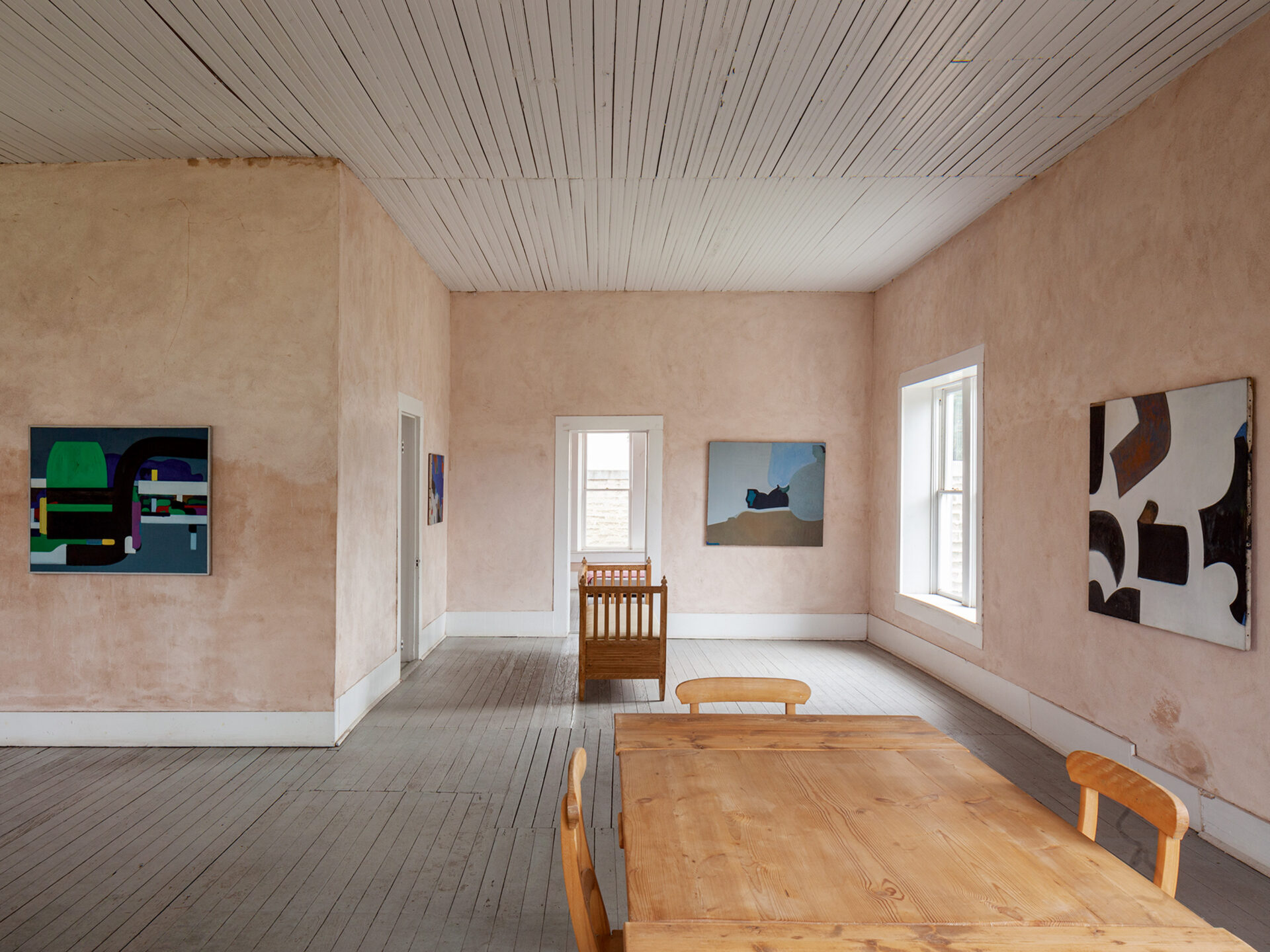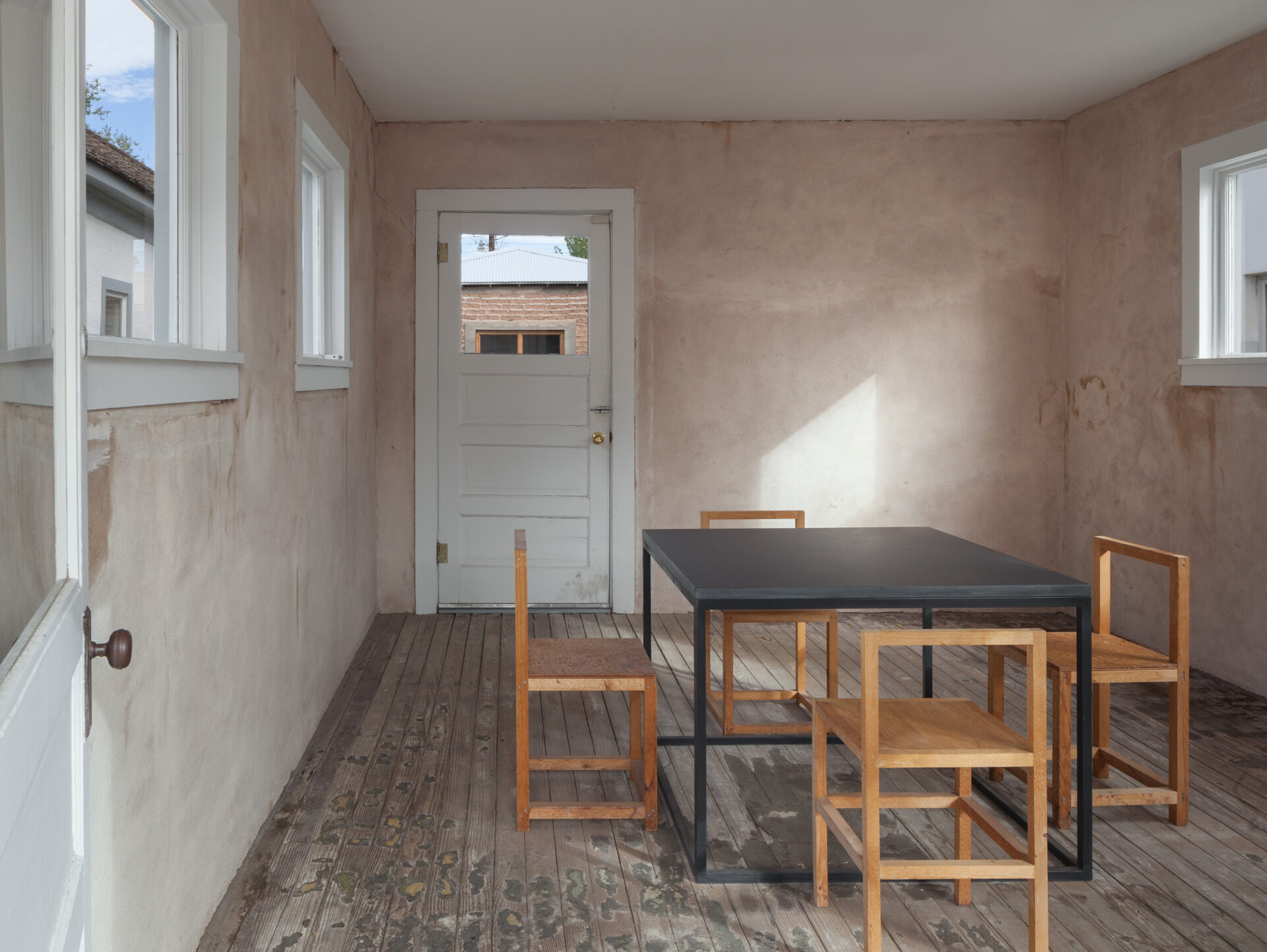



104 West Oak Street
Marfa, Texas
In 1989, Judd purchased the three buildings along Oak Street on five and a half lots of property in downtown Marfa. The 1,253-foot adobe-style structure dates to the 1920s and was named after the family who previously owned it. Judd began construction of an exterior wall to encircle the Cobb House and neighboring Whyte Building along with an adjoining Gatehouse in 1990.
Originally a single-family residence, Judd renovated the Cobb House for the installation of his paintings dating from 1956 to 1958. Installed throughout the house are furniture pieces collected by Judd, including examples of early 20th Century Swedish furniture and Shaker furniture. Judd transformed the residential structure—which once included bedrooms, kitchen, and bathroom—into a more open floor plan. He refinished the walls and ceilings with an adobe-style gypsum plaster, similar to one that he used in his studio on the third floor of 101 Spring Street in New York. The exterior was plastered with a smooth, white stucco finish.
The Gatehouse was created as an entry to the Cobb House and Whyte Building. There were designs for a pool, a building with bathrooms and a kitchen, and a surrounding adobe wall, but they were never realized. The Gatehouse was a former barbershop and record store which now houses a Judd-designed slate table and four prototype chairs. The exterior adobe wall was intended to fully enclose the complex and was intentionally left in its natural state, running 140-feet along the exterior of the property. On the west end of the wall, Judd incorporated a large niche that he intended to function as a weekend fruit and vegetable stand.
The Cobb House, Whyte Building, and Gatehouse are contributing buildings to the Central Marfa Historic District listed on the National Register of Historic Places.
The Agave Garden is situated outside of the Cobb House, Whyte Building, and Gatehouse on West Oak Street. The garden features more than twenty agave plants native to the region selected to highlight their use by indigenous peoples of the region for food, beverage, fiber, and cultural ceremonies. The two benches installed in the garden were originally designed by Judd for the outdoor space at La Mansana de Chinati/The Block.

Audio excerpt of Bromberg Distinguished Lecturer presented in conjunction with the current exhibition of Donald Judd’s work at the Dallas Museum of Art, Dallas, Texas, February 23, 1989. Courtesy of the Dallas Museum of Art Archives.